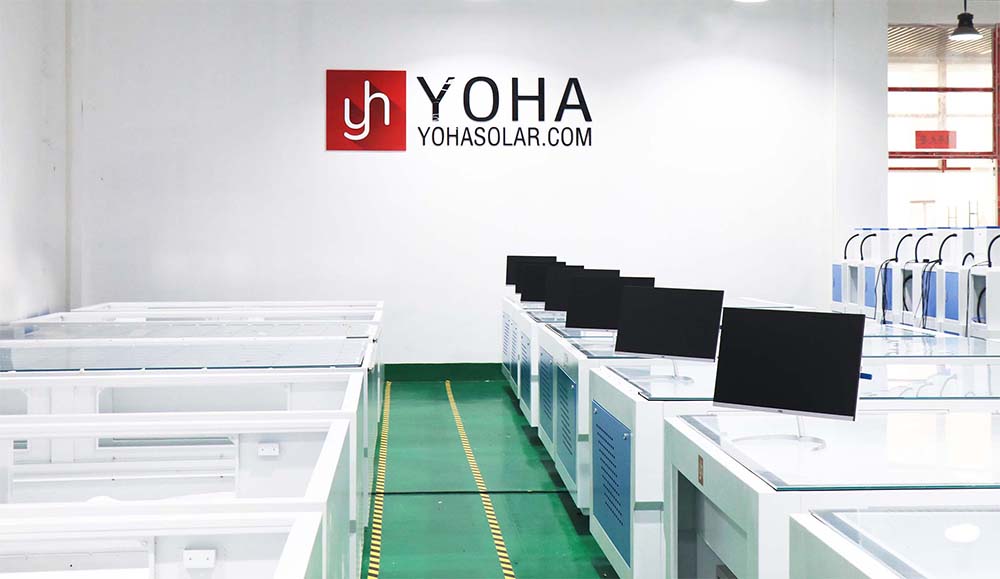Welcome to Wuhan Yoha Solar Technology Co., Ltd!
common problem
Site Map
Language:
 Chinese
Chinese
 English
English
Welcome to Wuhan Yoha Solar Technology Co., Ltd!
common problem
Site Map
Language:
 Chinese
Chinese
 English
English
"Is Rooftop PV Installation Harmful to Humans?" This is one of the most pressing concerns for households and businesses considering installing a photovoltaic (PV) system on their roofs. As solar power gains popularity, questions about its safety naturally arise. Let's address this key question using scientific facts to dispel unnecessary worries.
Radiation Concerns: Far Below Safety Standards, No Need for Alarm
The core of the question "Is rooftop PV installation harmful to humans?" often centers on electromagnetic radiation. PV panels themselves only generate extremely weak direct current (DC) electric fields during operation. Research conclusions from authoritative bodies are unequivocal:
The World Health Organization (WHO) clearly states that the electromagnetic fields generated by PV systems are of very low intensity, far below the safety limits set by the International Commission on Non-Ionizing Radiation Protection (ICNIRP), and pose no health risk.
Extensive measurement data from bodies like the National Council on Radiation Protection and Measurements (NCRP) shows that the electromagnetic radiation levels directly beneath PV panels are generally even lower than those produced by many common household appliances (such as microwaves, hair dryers, and mobile phones) during operation.
PV power generation utilizes the energy of photons in sunlight; its principle is the photovoltaic effect, which is fundamentally different from penetrating ionizing radiation like nuclear radiation or X-rays. Conflating the two is a common source of misunderstanding behind the concern "Is rooftop PV installation harmful to humans?"

Roof Structure: Professional Assessment, Safety Assured
Another aspect of "Is rooftop PV installation harmful to humans?" is the concern about whether installing a PV system could compromise the structural integrity of the building. The answer is: a professionally designed and properly installed PV system will not damage the roof structure.
Professional Load Assessment: Qualified installers will conduct a strict assessment of the roof's load-bearing capacity before design. Modern PV materials and mounting structures (mostly lightweight aluminum alloy) are meticulously engineered to be very light per unit area (typically around 15-25 kg per square meter), well below standard roof design load capacities (usually over 150 kg per square meter for residential buildings). Loads are scientifically distributed onto the roof's load-bearing beams or walls.
Standardized Installation Guarantees: Professional installation teams use specialized fixtures and waterproofing techniques appropriate for the roof type (tiles, metal, asphalt shingles, etc.), ensuring secure mounting and rigorously protecting the integrity of the roof's original waterproofing layer to prevent leaks. The installation process itself does not damage the building structure.
Fire Risk: Reliable Mechanisms, Focus on Quality & Maintenance
When addressing "Is rooftop PV installation harmful to humans?", fire hazard is another point of concern. The PV DC circuit does carry a theoretical risk of causing arcing under specific fault conditions (like damaged cable insulation or loose connectors), which could potentially ignite a fire. However:
Robust Safety Mechanisms: Modern PV systems incorporate multiple layers of safety:
DC Arc Fault Circuit Interrupters (AFCI): Quickly detect and shut down dangerous arcs.
Rapid Shutdown Devices: Allow for the quick de-energization of DC high voltage between modules from outside the roof in an emergency, ensuring firefighter safety.
Compliance with International Standards: Key components like modules, inverters, and cables must pass stringent fire safety and certification standards.
Core Focus: Quality & Management: Fire risk is primarily associated with the use of substandard equipment, non-compliant installation, or a long-term lack of maintenance and inspection. Choosing reputable suppliers offering high-quality products and professional installation services, coupled with regular system inspections and maintenance, effectively mitigates such risks.
Environment & Health: Clean Energy for a Better Life
When exploring "Is rooftop PV installation harmful to humans?", it's crucial to recognize its significant positive environmental and health benefits. Solar PV is a clean, renewable energy source:
Zero Emissions Operation: Produces no air pollutants (like SO₂, NOx, PM2.5) or greenhouse gases (CO₂) during power generation.
Improved Air Quality: Large-scale adoption can significantly reduce pollution problems like smog caused by fossil fuel power generation, fundamentally improving the quality of the air we breathe and overall environmental health. This is particularly vital for respiratory health.
Maintenance & Responsibility: Cornerstones of Safe Operation
To fully dispel concerns about "Is rooftop PV installation harmful to humans?", user responsibility is also key:
Regular Professional Inspections: Have the system inspected by professionals every 1-2 years. Checks should include electrical connection tightness, cable insulation condition, module surface cleanliness and integrity, and mounting structure stability.
Keep Modules Clean: Promptly remove obstructions like bird droppings, dust, snow, and fallen leaves. This ensures generation efficiency and prevents potential risks like localized overheating (hot spot effect).
Choose a Reliable Partner: Always select a certified, reputable installer who uses certified equipment and provides comprehensive after-sales service. This is critical for long-term, safe operation.
Conclusion: Science-Based Understanding, Peace of Mind with Green Power
Based on the above analysis, the answer to "Is rooftop PV installation harmful to humans?" is unequivocally clear: With scientific understanding, the selection of qualified products, professional and compliant installation, and appropriate maintenance, rooftop PV systems are safe for human health and reliable for building structures.
The electromagnetic radiation they produce is negligible, far below safety standards; professional installation following assessment does not damage the roof structure; robust system design and equipment standards effectively control fire risks. More importantly, the clean electricity it provides for homes and society, along with its environmental benefits, paves the way for healthier and more sustainable development.
When sunlight falls on the PV panels on your roof, it brings not only a continuous flow of green electricity but also the peace of mind that comes from making an environmentally responsible choice for the future. Rather than being troubled by unsubstantiated fears, let science be your guide. Embrace this clean gift from the sun and let your roof become the starting point for your participation in a greener future.
keywords:TOP
18086473422
MESSAGE
